Haybox from common household items
Posted on 2019-01-14 22:00 in designs • Modified on 2025-09-08 16:13 • Written by Arno Peters
This is a small design I did to show the different options available for making a haybox at home.
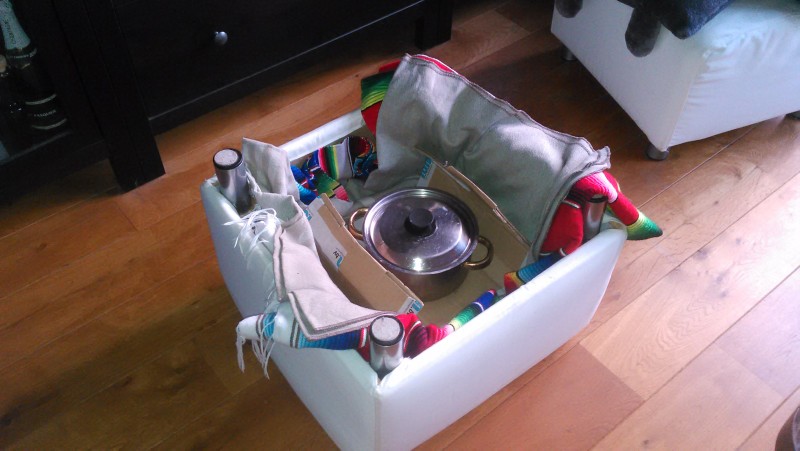
Another, more recent article documents our current (2025) use of the haybox.
Background
In our household we try to reduce our need for fossil fuels. One way is to prevent cooling of a heated substance by adding insulation. For ourselves we use layers of clothes to prevent cooling down. A haybox is an appropriate technology that does this for cooking.
Design strategy
I used CEAP for this design.
Collect information
We regularly cook meals that need to cook for a certain amount of time. Examples are: potatoes, rice, beans and their combinations like curry or chili. Other examples are preparations of hard fruits like quinces and cooking pears.
Historical hayboxes
From old books we found a number of designs for hayboxes
- some were put in furniture,
- others as a stand alone box in a room,
- still others had insulation put over the top of the pot while on the stove
Low Tech Magazine has a fascinating article on cooking pot insulation and fireless cookers.
Basic requirements for the haybox
- it needs to blend into the environment when not in use
- it needs to be easy to put into operation, otherwise it will not be used
- it needs to be accessible while holding a hot cooking pot with both hands
- the insulation has to be fire proof if it is used in vicinity of an open flame
- the insulated volume needs to be big enough to hold a cooking pot with lid
- the insulated volume needs to fit snugly around the pot to minimize heat leaking out
Evaluate the information
Thinking in patterns
The basic pattern is putting a hot environment in an insulated volume to keep the environment from cooling down. The volume needs to hold one cooking pot with lid. The basic shape can be a cube or a cylinder. The insulation needs to be protected from accidentally spilling liquid.
The insulation can be done using (a combination of):
- blankets
- cushions
- card board
- crumpled newspapers
- natural fibers (like hay)
- synthetic fibers (like fleece)
- Styrofoam
- rock or fiberglass wool
Possible locations for the haybox:
- in the kitchen
- on the counter
- on the floor
- outside
- on the ground
- on a table
- on (other) terrace furniture
- in the living room
- on the couch or on the ottoman
- on the table
- on one of the cabinets
- in one of the cabinets
- on the floor
- on an ottoman
- in an ottoman when it is turned over
- in the bedroom
- in the bed
- on the window sill
Zones and sectors
When we work in the kitchen, we can distinguish the following zones:
- zone 0: the kitchen itself
- zone 1: living room and garden (adjacent to kitchen)
- zone 2: first floor (going up one flight of stairs)
- zone 3: attic / second floor (going up two flights of stairs)
To consider which zone is the best to put the haybox we consider the following when the haybox is in use:
- we do not need to look at it for some time
- kitchen space is at a premium when cooking
- moving stuff out of the kitchen (even temporarily) is good
- carrying a hot pot with boiling liquid up a flight of stairs is dangerous
These design constraints indicate zone 1 to be the appropriate zone to put the haybox in.
This leaves two options: the garden and the living room. Looking at the insulation already available in both options for zone 1, the living room is the location to focus on.
Apply Permaculture Ethics and Principles
Ethics
- Earth care
- Reduce
- uses fuel only for initial heating, not for keeping warm
- no need for (extra) heating elements
- Reuse
- reuse blankets and cushions for insulation
- space used for sitting is also used for cooking
- Reduce
- People care
- provides great quality food
- no risk of burning food
- set-and-forget, until dinner that is
- Fair share / Future care
- provides a practical demonstration of appropriate technology
- simple to use
- inspiration for others to do the same
Multiple elements x multiple functions
Elements in the living room we can reuse:
- for insulation:
- mats
- blankets
- cushions
- for insulation protection:
- a wooden plank or cutting board
- card board
- for holding the insulation and the pot:
- upside down ottoman is big enough to hold insulation and our largest pot, the seat cushion then provides insulation from the floor
- other options require more space or are not quite big enough
Plan for Action
Implement
We started using the haybox in the spring of 2018. The following pictures show the process of converting the ottoman into a haybox.
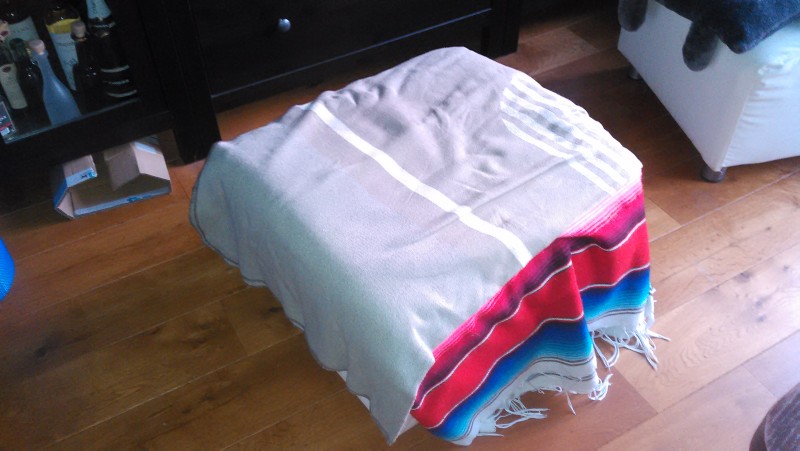
The haybox in sitting mode aka an ottoman.
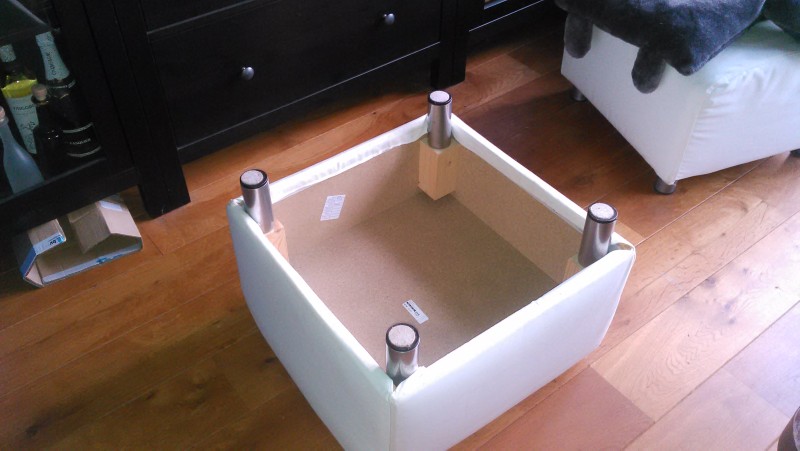
Preparing the haybox by turning the ottoman upside down.

Lining the inside of the ottoman with one blanket.
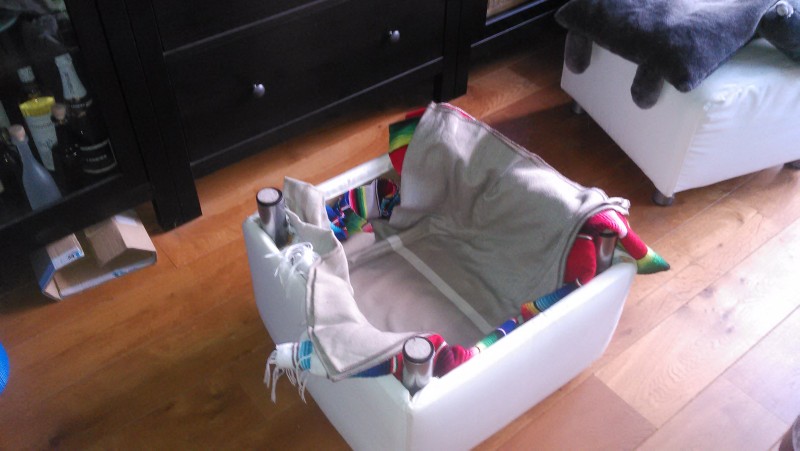
Lining the inside of the ottoman with a second blanket. Note the card board under the drawer. We use it in the next step.
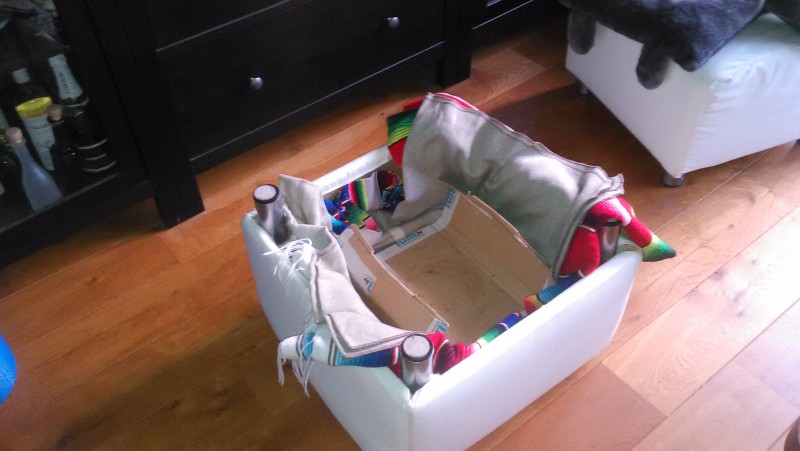
Putting a card board protection down.

Putting in the hot pot.
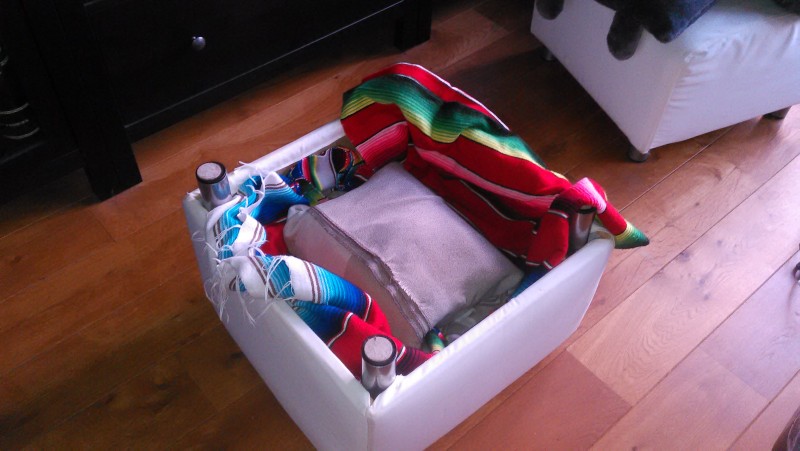
Folding the inner blanket over the pot. Note the sides of the blanket are tucked into space left by the card board.
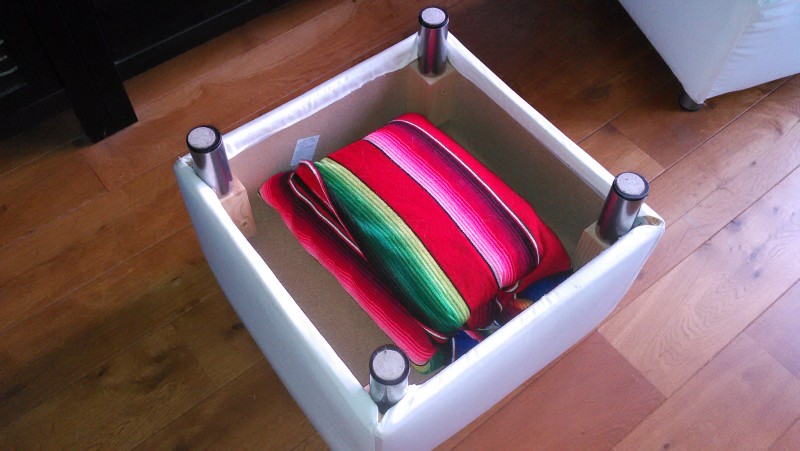
Folding the outer blanket over the pot. Note that the sides of this blanket are also tucked into the space left by the card board.
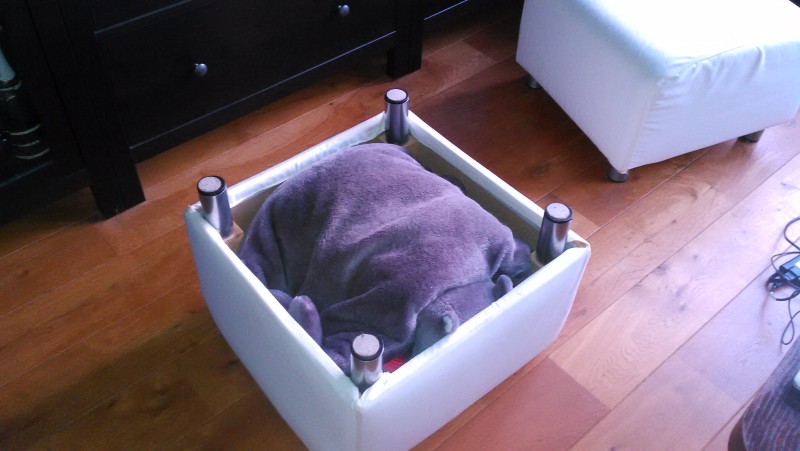
Adding another bit of insulation on top of the blankets. Note that this came from the top of the other ottoman.
Maintain
The only maintenance required is turning the ottoman back when the hay box is not in use and storing the piece of card board somewhere out of sight.
Evaluate
We started using our haybox in the spring of 2018. We find the box a pleasure to use. One of our favorites for it is making rice. Putting rice into lightly salted water at a 2:1 ratio, bringing it to a boil and putting it in the haybox creates the most amazing, fluffy rice.
It's also very convenient to leave food in for a few hours as the haybox will keep dishes hot for quite some time.
We have two ottomans and have used both on occasion: one for rice and the other for a curry.
We noticed the lid needs to heat up as well before we put the pot in the haybox. As the heat equalizes in the haybox, a cold lid will bring down the temperature in the box quite a bit.
We are very fond of our haybox.
tweak
As of 2019, I no longer turn the ottoman over. I simply put the pot in the middle of the ottoman on the cardboard and wrap the blanket over the pot for insulation.